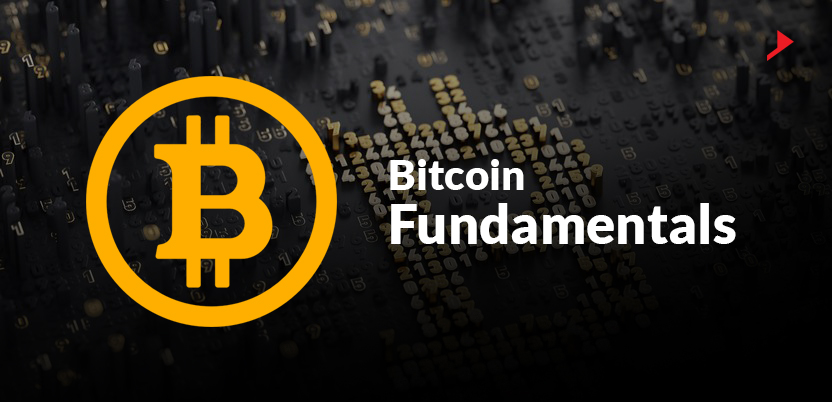The fundamental aim of publishing this article is to help our readers understand the staggering notion behind Bitcoin in a simpler and most compassionate way without using complex technical jargon. I am sure this article will also be very useful for the readers who are aware of the basics of BITCOIN, although are in search of clarifications on different areas. Questions arising in the mind of every Bitcoin beginner will get favorably answered here. External links provided in this article can help you get the better perspective towards mining.
What is Bitcoin?
Bitcoin is a digital currency managed by a large decentralized network. Using peer to peer money transfer helps in instantly transferring money into an account in any country without any additional transaction fees. This makes international money transfer easier than ever before. Bitcoin wipes out the gap between domestic and international transfer.
In fact, transactions ensue between two peer accounts/wallets where peer’s residing location is irrelevant.
Role of the decentralized network is to validate the transaction and issuing new currencies to the market. Issuing of new currencies are also controlled by the underlying technology. The network also maintains Bitcoin ledger, which is publicly available to anyone and the ledger contains transaction details between each account.
To know more about Bitcoin, use the following links:
https://en.bitcoin.it/wiki/Main_Page
So how exactly the coin looks like? Is it like a unique number?
No, it is not a unique number or not like any conventional metal coin or paper currency. Think about your online bank account, where you will only get a proof that your account holds a certain amount. Similarly, in Bitcoin network, there will be a proof that your account number A holds X number of Bitcoins and the proof is available in Bitcoin ledger which is public and anyone can see.
From the ledger, one can see details like how much Bitcoins account, A received, how much transferred from A and to which all accounts, when transactions happened, what is the current balance etc.
In conclusion, account/wallet A holds X Bitcoin means according to Bitcoin ledger current balance of account/wallet A is X Bitcoins.
How new Bitcoins are created and who creates it?
In a country’s currency, it is the responsibility of the central authority of the country to issue new currency and manage the same. For example, in India Reserve Bank of India does the same under the guidance of central government. Since there is no centralized authority the Bitcoins are generated by the decentralized network. Network nodes perform a mathematical computation to solve a problem and the node which solve the problem get the privilege to introduce new Bitcoins using a special transaction. Solving this mathematical problem is called mining. High-performance computational machines are used to solve the problem and the more computational power you have the more will be the chances of solving a problem.
Also introducing new coins by mining is limited by the Bitcoin protocol and right now 12.5 new Bitcoins can be introduced to the market by mining a block. Bitcoin protocol also adjusts the difficulty of the problem to ensure an average time of 10 minutes to mine a block. So, it means on an average every 10 minutes 12.5 new Bitcoins are introduced into the market.
Generating new Bitcoins in the form of reward after mining a block is also reduced by half, every four years. In 2016 new Bitcoin generation has been adjusted to 12.5 Bitcoins and in 2020 it will be adjusted to 6.25 new Bitcoins.
In conclusion, new coins are introduced to the market by mining and supply is limited by the Bitcoin algorithm.
Who controls this Bitcoin network?
All the participating network nodes together control this network and if you own a machine, you can also participate in the network and start mining to earn some Bitcoins. But as the total Bitcoin network is so powerful and spread across the globe it is practically not possible to hijack the network by an individual or group or a country.
Is Bitcoin legal?
Bitcoin is legal in most of the countries except a few countries like Bangladesh, Bolivia, Ecuador & Kyrgyzstan. It is widely used in most of the countries and its popularity is increasing in an exponential rate.
To know more about its legal status in different countries or territories please visit:
https://en.wikipedia.or/wiki/Legality_of_Bitcoin_by_country_or_territory.
How can I acquire Bitcoin?
There are two simple ways to acquire Bitcoins. The first method is buying Bitcoins from exchanges using your local currency. Either you can use any Bitcoin exchange, which is available in your country or you can directly buy from a person who owns Bitcoins.
List of bitcoin exchanges can be found at https://bitcoin.org/en/exchanges
The second method is investing in mining machines and participating in Bitcoin network to mine and earn Bitcoins as a reward. Mining machines are high electric energy consuming machines and they produce large amount of heat. Using mining machines will be profitable only in an area where both electricity charges and cooling charges are cheap.
If you own a machine, you can calculate the expected earnings from a machine using a mining calculator like the one at https://www.cryptocompare.com/mining/calculator/btc
How do I earn the reward of 12.5 Bitcoins by participating in mining?
Yes, you can earn 12.5 Bitcoins if you win in solving the problem first before all other participating nodes. As the Bitcoin network is so powerful and a huge number of powerful machines are competing to mine, the chance to solve a problem using only a few numbers of machines is equivalent to taking a million-dollar lottery and winning the same.
If the chance to get Bitcoin rewards using couple of machines is less, then why should I invest in machines and participate in mining?
Here comes the concept of pool mining. In pool mining instead of solving the problem alone, the power of your machine can be contributed to a mining pool. So, ultimately mining pools try to solve the problem with the help of nodes, which are connected to that pool. Here it does a teamwork to solve the problem and if they win, the reward will be distributed among the participating nodes into that pool according to their contribution and also based on the prior agreement between the pool owners and the participating nodes.
So it is always better to participate in a pool than mining alone unless you want to try your luck by mining alone.
A few leading Pools are:
Can I mine using my desktop computer or Laptop?
Yes, you can mine using your computer’s CPU (Central Processing Unit) or GPU (Graphical Processing Unit) but you will end up in the loss as the amount of bitcoin mined won’t be sufficient to meet your electricity bill. So more powerful application- specific Bitcoin mining machines are recommended for mining.
A leading manufacturer of Bitcoin ASIC (Application Specific Integrating Circuit) machines is Bitmain.
Where can I store my Bitcoin?
All your Bitcoins will be saved in your Bitcoin wallet. So before acquiring a Bitcoin, the first thing you need to do is creating a Bitcoin wallet. In Bitcoin wallet you will have two items, one is a public key and the second one is an associated private key. The public key is your account number and the private key is the key to access your account.
Many applications and third-party services are available to create a wallet. If you create a wallet using an independent application like electrum you will have complete control over your public and private keys. The only thing you need to make sure is to use the wallet in a secure computer and it is recommended to take a backup of your public and private key combinations in a safe location so that even if the computer is damaged or lost you still can access your accounts.
You can also use third party free/paid services to create a wallet and those services will take care of the security of your wallet. But the risk is still there as hackers may steal accounts private keys from their server if the hacker finds some breach in their server or the service provider itself may simply abscond by taking all your Bitcoins. So selecting an appropriate wallet is very very important and while going for a third party service always look for the kind of security they provide and the reputation of the service provider.
To see the list of wallet options please visit:
https://bitcoin.org/en/choose-your-wallet
How can I receive Bitcoins from my friend, who already owns few Bitcoins?
After creating a wallet, to receive Bitcoins from your friend, you should provide your public address to your friend and ask him to transfer the desired amount. If he has enough balance he can transfer the fund to your wallet using the public key, you shared using his wallet application.
Similarly, if you own a few Bitcoin and want to transfer Bitcoins to your friend, use your friend’s public key to transfer Bitcoins using your wallet application.
What is the smallest unit of Bitcoin?
Satoshi bit is the smallest unit of Bitcoin.
One Bitcoin is divided into one million bits and each bit is divided into 100 Satoshi bits. One Bitcoin is equivalent to 100 million satoshi bits. Hence, you can have 0.00000001 Bitcoin.
I heard that the total bitcoins to exist is limited. How much bitcoins can exist and how is it limited?
Yes, it is true that the total number of bitcoin can ever exist is 21Million. The mining reward system is programmed in such a way that rewards will be halved on solving every 2,10,000 blocks which will take nearly 4 years because the average time to solve a block is 10 minutes.
At the beginning, Bitcoin reward was 50 Bitcoins per block and then it halved to 25 Bitcoins and now it is 12.5 Bitcoins from September 2016. Next halving will occur on September 2020 and at that time the reward will be 6.25 Bitcoins. And this halving will take place on every four years.
Who decides the value of Bitcoin? Is it worth investing in Bitcoin?
Value of bitcoin is decided by the market. It is purely based on demand versus supply. With increasing popularity, its use as a currency is widely accepted in different sectors and its value is expected to increase in long term. Even though we can expect some volatility in short term. A large number of experts consider Bitcoin as an asset than a currency. Majority of the investment advisors are bullish on Bitcoin for long-term investment.
I’m Ajay C Thomas, Founder & CEO of Sweans Technologies Ltd, a global agency specializing in website design, branding, web application development, and eCommerce, serving clients around the world with proven success.







